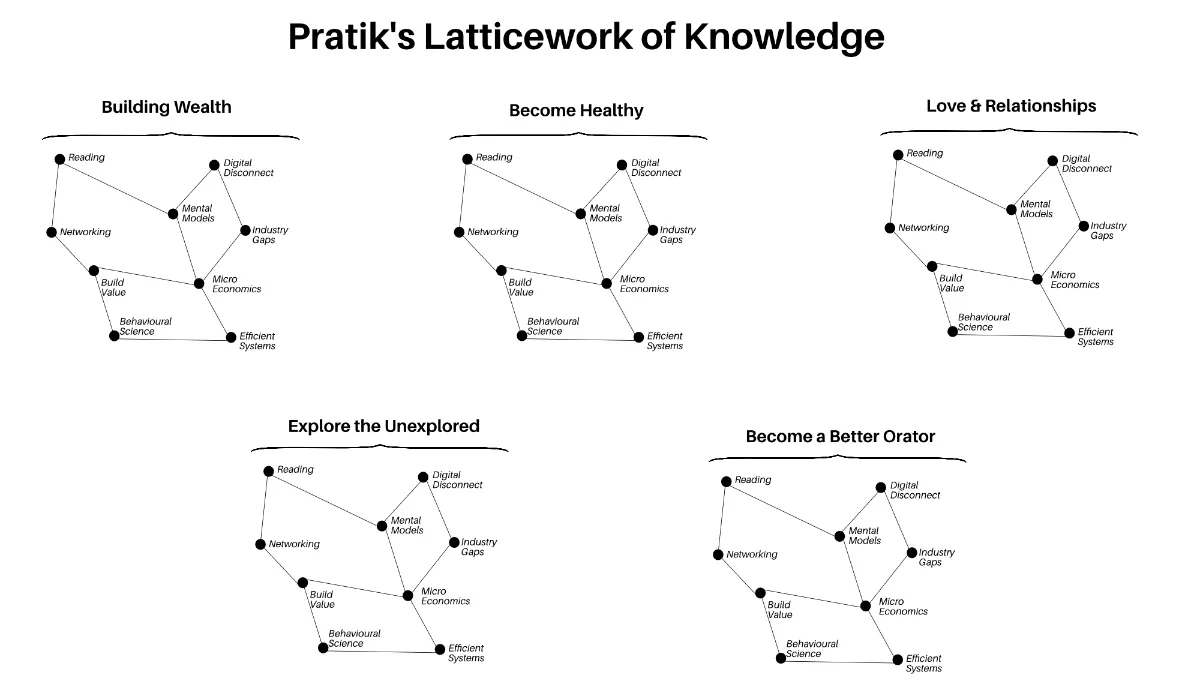Unveiling the Power of Hanlon’s Razor: My Personal Journey in Embracing Positivity, Overcoming Negative Assumptions, and Cultivating Stronger Relationships.
If you ever find yourself feeling like the world is working against you, it’s important to remember that you’re not alone in this sentiment. We all have a tendency to assume that when things go wrong, there must be some grand conspiracy directed specifically at us. For example, a co-worker might fail to deliver a report on time and we could immediately jump to the conclusion that they’re intentionally trying to derail our career aspirations. Or if our child accidentally breaks something valuable, we may attribute it to their desire to annoy and waste our time. Even simple inconveniences like WiFi issues at a coffee shop can lead us to suspect that the staff is deceiving us just to lure us in.
However, it’s vital to understand that these assumptions we tend to make are rarely true. There are usually much simpler and more innocent explanations behind these occurrences. Maybe the co-worker genuinely made an honest mistake about the day or perhaps our child simply had messy hands from enjoying some creative playtime. And let’s not forget that WiFi routers can malfunction without any ulterior motives from the coffee shop staff.
Here, we can turn to the wisdom of Hanlon’s razor, which advises us not to immediately attribute malice to situations that can be better explained by other factors, such as misunderstandings or accidents. By adopting this perspective, we can approach life with a gentler and kinder mindset, giving others the benefit of the doubt and assuming positive intentions, unless proven otherwise.
What is Hanlon’s Razor?
Hanlon’s Razor provides us with a valuable mental framework summarized:
‘Never attribute to malice that which can be adequately explained by neglect or incompetence.’
Similar to Occam’s razor, this principle serves as a practical tool for quick decision-making and intelligent thinking.
By applying Hanlon’s razor in our daily lives, we can foster better relationships, cultivate empathy, and enhance rationality. It encourages us to give people the benefit of the doubt and approach situations with more understanding.
The true value of Hanlon’s razor shines through in various aspects of life, including relationships, business endeavors, and personal happiness. In our complex lives, where things often seem to go wrong (as per Murphy’s law), it is all too easy to place blame on the nearest person and assume their intentions are malicious. However, following Hanlon’s razor reminds us to consider alternative explanations rooted in oversight or simply human error instead.
It’s common for people to swiftly accuse corporations, politicians, bosses, employees, coffee shop workers, and even family members of intentionally trying to undermine them. In these moments, we tend to forget that we ourselves have made similar mistakes countless times. We overlook the occasions when we bumped into someone on the street, spilled a drink at a relative’s house, or forgot to meet a friend at the agreed-upon time. Instead of considering our own fallibility, we easily become greatly annoyed by the actions of others.
This also reminds me how annoyed we get at the car at the front when it doesn’t move the moment signal lights go green, or sometimes, even before the signal becomes green.
In these situations, it is important to recognize that assuming malicious intent is likely to escalate the problem further. None of us can truly know what someone else intends or desires. Even the most intelligent individuals make numerous mistakes throughout their lives. Incompetence or negligence is more often the cause of problems than deliberate malice.
When a situation triggers anger or frustration within us, it can be beneficial to reflect on whether these emotions are justified. Instead of harboring disdain towards those who may have caused us problems, a more constructive approach is to seek to educate them. By doing so, we can help prevent similar situations from occurring in the future.
How Hanlon’s Razor fits in my latticework of Knowledge?
I believe, combining Hanlon’s razor with other mental models in my latticework of knowledge helped me a lot to build better relations, and businesses and ultimately, get mental peace. A few of the mental models I can think of now are:
1. Availability heuristic: This mental model reminds us that we often misjudge the frequency of events, particularly when they are vivid and memorable. When it comes to keeping a score of other people’s mistakes, we may recall previous instances and be inclined to view similar situations through the lens of malicious intent instead of recognizing them as simple mistakes. By understanding the availability heuristic alongside Hanlon’s razor, we can better comprehend why certain situations evoke strong emotions and how memory bias can overshadow our ability to give others the benefit of the doubt.
2. Confirmation bias: We all have a tendency to seek information that confirms our existing beliefs. When faced with cognitive dissonance, we strive to realign our worldview by looking for evidence that supports our preconceived notions. Hanlon’s razor plays a role here by helping us overcome confirmation bias. If we have an expectation of malicious intent, we are more likely to attribute it to others, making it difficult to recognize when mistakes arise from incompetence or accidents. By applying Hanlon’s razor, we can mitigate the impact of confirmation bias and approach situations with a more rational and objective perspective.
3. Bias from disliking/hating: Hanlon’s razor can provide insights into our interactions with individuals, institutions, or entities that we dislike. Our tendency to attribute their actions to malice is heightened when there is already a negative bias. It can be challenging to respond with empathy and understanding when someone we dislike makes a mistake, as our emotional reactions may take over. However, recognizing that neglect or incompetence are more likely explanations, regardless of our personal feelings, allows us to defuse the situation and maintain a mature approach.
4. Projection: Projection is a psychological protective mechanism where we attribute our own flaws or failures to others. This allows us to uphold a positive self-image and externalize blame. By running a reality check and applying Hanlon’s razor, we can prevent this tendency and take responsibility for our own actions before unfairly blaming others.
In summary, combining Hanlon’s razor with other mental models enhances our ability to navigate complex situations, recognize biases, and make more rational choices based on logic rather than emotions.
The Uses of Hanlon’s Razor in my day-to-day life
If you are someone who knows me personally, you’d know how much I hate mass media and consuming media content. The modern media landscape often capitalizes on outrage, treating it as a profitable commodity.
This frequently leads to articles and stories that attribute malicious intent to situations that could easily be explained by incompetence or ignorance. As consumers of media, it’s important to apply the principle of Hanlon’s razor when evaluating what we see in newspapers, websites, and social media platforms. Avoiding consumption entirely has helped me further take unbiased decisions for many areas in my life.
For instance, let’s take the example of Apple’s Siri voice search. When users discovered that it couldn’t find abortion clinics, many were quick to label it as proof of misogyny within the company. However, it turned out to be a simple programming error, not a deliberate act of malice. This highlights the value of looking beyond immediate assumptions and considering alternative explanations rooted in incompetence rather than intentional wrongdoing.
Another case is YouTube’s content policies and their filtering of videos discussing LGBTQ matters. Many people immediately jumped to the conclusion that it was driven by homophobia on the part of programmers. Yet, the truth was that it was an algorithm error affecting various unrelated videos as well, showcasing how confirmation bias can shape our perceptions.
By embracing Hanlon’s razor in our media consumption, we can challenge assumptions of malice and approach complex situations with a more nuanced perspective. This practice helps us avoid falling into the trap of confirmation bias, fostering more constructive conversations and analysis.
Let’s look at another example where communication is affected by language barriers. We have all encountered people who struggle to speak our language, especially when they are visitors or new residents in our country.
Sometimes, we see others getting frustrated with them, or perhaps we have been in a situation where people got annoyed with us when we didn’t speak their language well. It’s important to remember that these individuals are not intentionally mixing up words or speaking differently to waste time. Hanlon’s razor tells us that they are simply struggling to express themselves clearly.
A similar issue arises when someone uses language that is either too complex or too basic. This can create a barrier to understanding, and others might assume that the person is trying to confuse them or is being blunt.
A helpful way to handle strong reactions to unintentional events is to mentally reframe the “perpetrator” as a toddler accidentally knocking over a vase. By doing this, we acknowledge that their actions were not deliberate but rather a result of being inexperienced or in need of guidance. This perspective helps us regain our composure quickly and avoid taking it personally.
To effectively utilize Hanlon’s razor, it is important to consider logic, past experiences, and empirical evidence when applying it. Incorporate it as a valuable mental model in your decision-making process, but remain cautious not to overlook behavior that is intentionally harmful.



